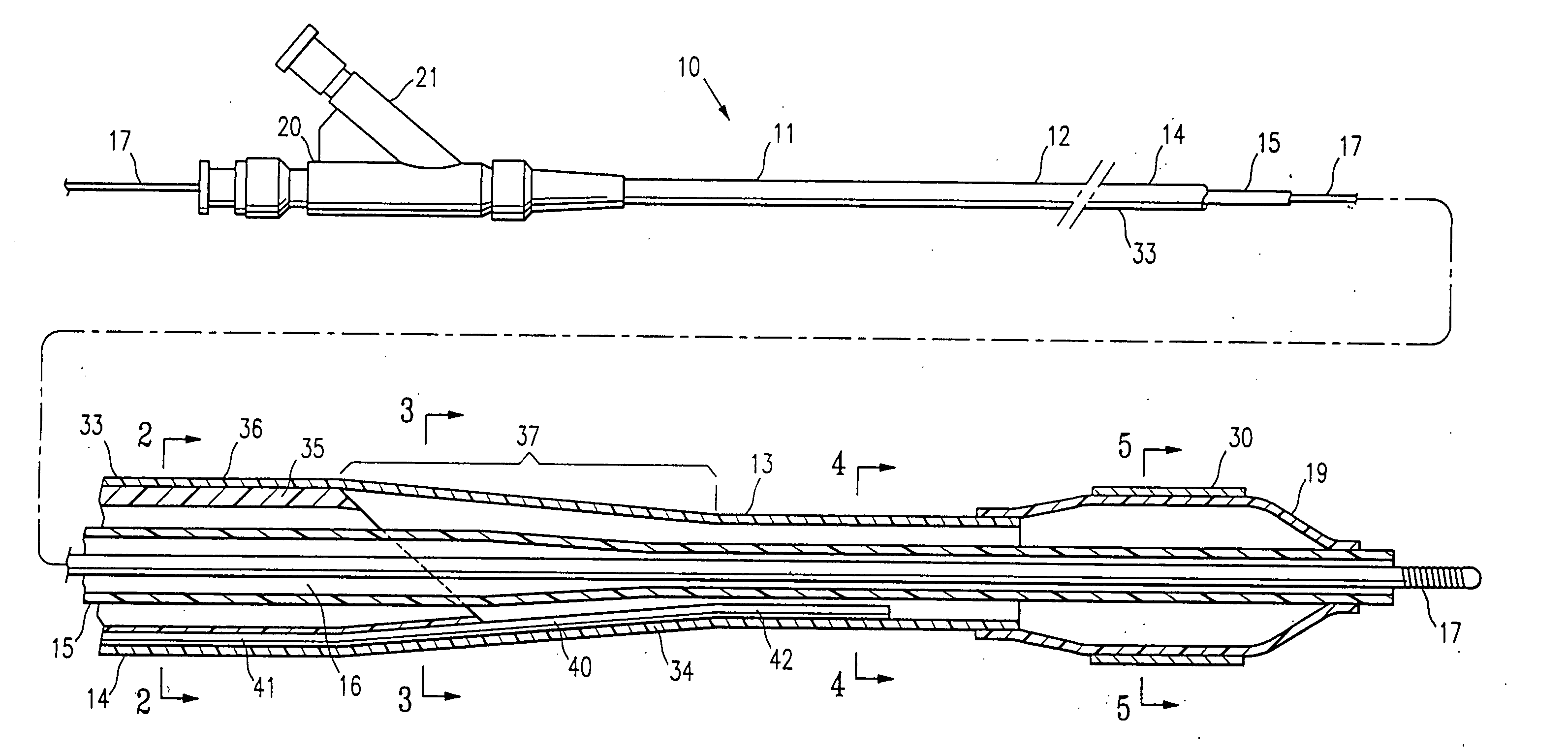Catheter having a multilayered shaft section with a reinforcing mandrel
a multi-layered, reinforcing mandrel technology, applied in the field of catheters, can solve the problems that the support mandrel does not always transmit axial force effectively, prior art designs have suffered from various drawbacks, etc., and achieve excellent pushability, trackability, and manufacturability.
- Summary
- Abstract
- Description
- Claims
- Application Information
AI Technical Summary
Benefits of technology
Problems solved by technology
Method used
Image
Examples
Embodiment Construction
[0019]FIG. 1 illustrates an over-the-wire balloon catheter 10 embodying features of the invention. Catheter 10 generally comprises an elongated catheter shaft 11 having a proximal end, a distal end, a proximal shaft section 12, a distal shaft section 13, an outer tubular member 14, and an inner tubular member 15. Inner tubular member 15 defines a guidewire lumen 16 adapted to slidingly receive a guidewire 17. The coaxial relationship between outer tubular member 14 and inner tubular member 15 defines annular inflation lumen 18, as best shown in FIGS. 2-4, illustrating transverse cross sections of the catheter of FIG. 1, taken along lines 2-2, 3-3 and 4-4, respectively. An inflatable balloon 19 is disposed on the distal shaft section 13, having a proximal skirt section sealingly secured to the distal end of outer tubular member 14, and a distal skirt section sealingly secured to the distal end of inner tubular member 15, so that its interior is in fluid communication with inflation l...
PUM
 Login to View More
Login to View More Abstract
Description
Claims
Application Information
 Login to View More
Login to View More - R&D
- Intellectual Property
- Life Sciences
- Materials
- Tech Scout
- Unparalleled Data Quality
- Higher Quality Content
- 60% Fewer Hallucinations
Browse by: Latest US Patents, China's latest patents, Technical Efficacy Thesaurus, Application Domain, Technology Topic, Popular Technical Reports.
© 2025 PatSnap. All rights reserved.Legal|Privacy policy|Modern Slavery Act Transparency Statement|Sitemap|About US| Contact US: help@patsnap.com



